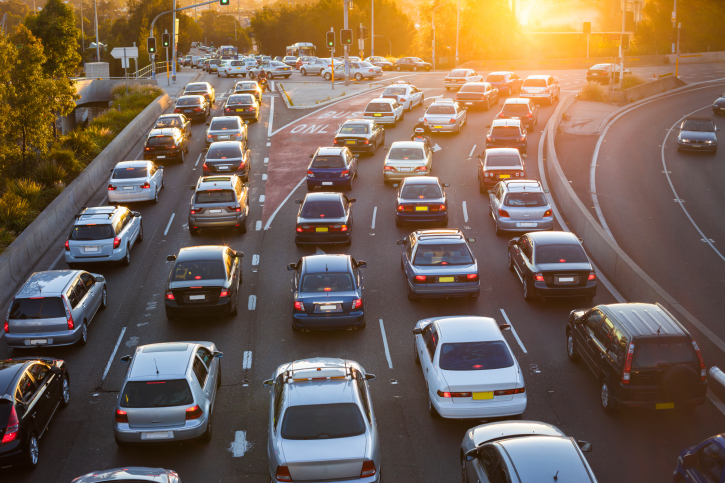How Does OKC’s Traffic Congestion Rank?

This is according to a composite report for 2011 to 2013 compiled by New Geography from annual traffic congestion reports by Tom Tom, INRIX and the Texas Transportation Institute of Texas A&M University.
New Geography looks at traffic congestion as an economic factor. “It is important that traffic congestion be controlled sufficiently to facilitate a more competitive metropolitan economy,” the report says.
Major metropolitan areas that have lower levels of congestion tend to be smaller and to have lower urban population densities. Congestion leads to excess travel time to reach a destination as compared to the typical travel time if all traffic were free-flowing.
Oklahoma earns an excess travel time score of 13.7 percent, according to this report’s calculation. Richmond, Va., is the least congested major metropolitan area in the nation (8.7 percent).
At the other end of the scale, Los Angeles has the worst traffic congestion (44.4 percent excess travel time), followed by Austin, Texas, (34.5 percent) and San Francisco (34.4 percent).
“Because traffic congestion increases travel times, it necessarily reduces the share of a metropolitan area’s (labor market) jobs that can be reached by the average employee,” New Geography says. “A considerable body of research associates greater access (measured in time) with improved economic performance and job creation.”
Traffic Congestion and Car Accidents
Meanwhile, if you’re still questioning how congestion-free Oklahoma City is, you might like to hear that the level of traffic congestion in Oklahoma City may actually result in fewer car accidents.
As the AAA Foundation for Traffic Safety explains, research shows that low levels of traffic congestion result in numerous crashes, but the rate of accidents decreases rapidly as congestion builds. Then, accident rates increase gradually at peak levels of congestion.
“This U-shaped model holds true for overall weekday and weekend crashes, multi-vehicle crashes, rear-end crashes, and property-damage-only crashes. On the other hand, injury and fatal crashes tend to decrease steadily as v/c ratios (volume-to-capacity, i.e., congestion) increase.”
Low traffic congestion permits higher speeds, AAA says, at which single-car fixed-object and rollover crashes become more prevalent. Also, the least traffic congestion occurs late at night and in the early morning, when drinking and drowsy drivers are prevalent, thus boosting car accident numbers.
At peak traffic congestion, traffic conflict causes more accidents. But the increase in congestion, which translates to slower speeds,appears to limit the number of crashes causing fatalities and injuries, AAA says.
Blog CATEGORIES
Let's Talk About It
Speak with an experienced attorney at no cost to you

